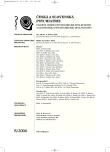Stimulation of Prefrontal Cortex and Therapy of Negative Symptoms of Schizophrenia
Authors:
R. Přikryl; E. Češková; H. Kučerová; T. Kašpárek; L. Ustohal; I. Palčíková
Authors‘ workplace:
Psychiatrická klinika LF MU a FN Brno
přednostka prof. MUDr. E. Češková, CSc.
Published in:
Čes. a slov. Psychiat., 102, 2006, No. 8, pp. 416-422.
Category:
Comprehensive Reports
Overview
Negative symptoms are regarded as the most persistent and disabling component of schizophrenia. The possibility of influencing them by means of antipsychotics remains problematic. Repetitive transcranial magnetic simulation (rTMS) presents a new opportunity for influencing negative schizophrenic symptoms. A theoretical justification of the effect of rTMS on negative schizophrenic symptoms can be seen in the fact that high-frequency rTMS has an activating impact on cortex neurons. The negative correlation between activity of the frontal cortex and severity of negative symptoms has been proved repeatedly. Another important fact is that dopamine can be released in the mesolimbic and mesostriatal brain systems by high-frequency stimulation of the frontal cortex. There are hardly any consistent published data mapping the subject in clinical practice.
Key words:
frontal cortex, treatment, negative symptoms, rTMS, schizophrenia, stimulation.
Labels
Addictology Paediatric psychiatry PsychiatryArticle was published in
Czech and Slovak Psychiatry

2006 Issue 8
Most read in this issue
- Bipolar Affective Disorder in Children and Adolescents
- Stimulation of Prefrontal Cortex and Therapy of Negative Symptoms of Schizophrenia
- Case Reports - Other Association
- Risk Factors of Child and Adolescent Suicidality
